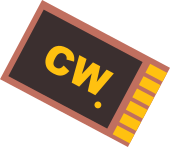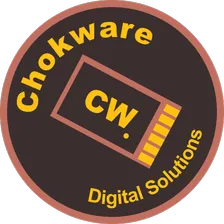Website vs Web Application
What's the Difference and Why It Matters
In today's digital landscape, the terms 'website' and 'web application' are often used interchangeably – but they serve very different purposes. A website primarily delivers content and information, while a web application provides complex interactivity and functionality directly in the browser. Understanding the distinction will help you choose the right approach for your project, optimise development costs, and deliver the best possible experience to your users.
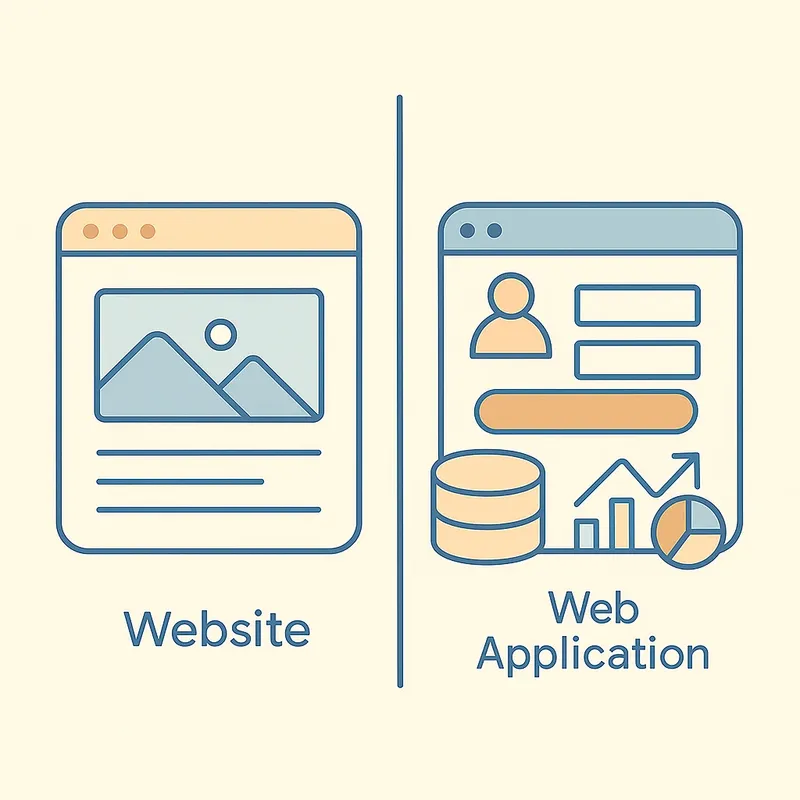
Examples
-
Websites
- Corporate landing pages (e.g. Apple's marketing site)
- Blogs and news portals (e.g. Medium, BBC News)
- Portfolios and brochure sites (e.g. personal design portfolios)
-
Web Applications
- Email clients (e.g. Gmail, Outlook Web)
- Project management tools (e.g. Trello, Asana, Jira)
- Online banking platforms (e.g. your bank's customer portal)
- Collaboration suites (e.g. Google Docs, Figma)
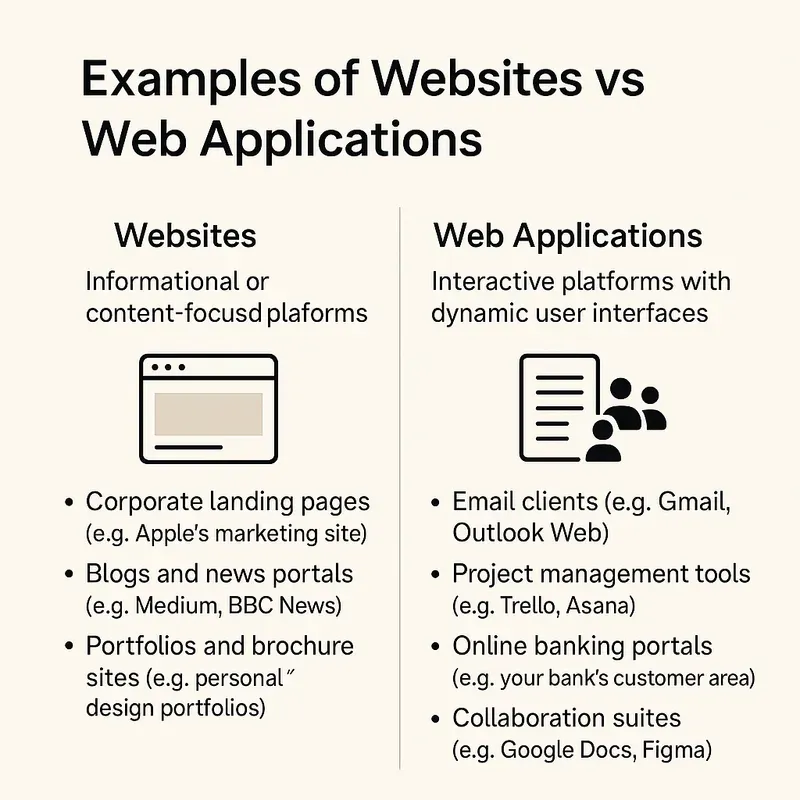
What Is a Website?
A website is a collection of interlinked web pages, usually serving informational or marketing purposes. Key characteristics include:
- Static or minimally dynamic content (such as blog posts, company information or portfolios)
- Read-only or lightly interactive features (like forms or comment sections)
- Built primarily with HTML, CSS, and limited JavaScript
Websites are excellent for presenting content to large audiences with relatively low development overhead.
What Is a Web Application?
A web application is software you use through a web browser that delivers rich interactivity and complex functionality. Characteristics include:
- Highly dynamic user interfaces
- Extensive use of client-side JavaScript (often using frameworks such as React or Vue), supported by server-side APIs
- Examples include Gmail, online banking platforms, and productivity tools like Trello
Web apps behave much like desktop applications but run entirely in the browser.
Key Differences
| Aspect | Website | Web Application |
|---|---|---|
| Purpose | Inform or market | Solve tasks, manage data |
| Interactivity | Low to moderate | High – real-time updates, dashboards |
| Architecture | Mostly static pages | Client-server with REST/GraphQL |
| State Management | Minimal | Persistent (sessions, tokens) |
| Complexity & Cost | Lower | Higher – development & maintenance |
Advantages of Web Applications over Desktop Software
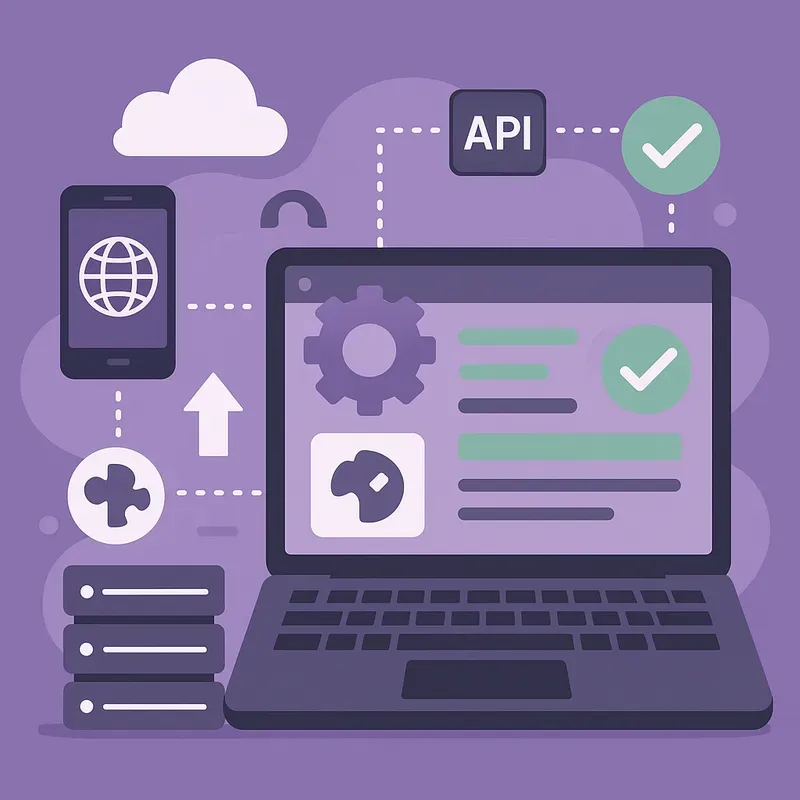
-
Cross-Platform Access
Web apps run on any device with a modern browser – no installation required, with automatic updates. -
Centralised Maintenance and Deployment
Bug fixes and new features are deployed server-side, so all users benefit instantly without manual updates. -
Scalability
Take advantage of cloud infrastructure to scale backend services without needing user hardware upgrades. -
Seamless Integration
Easily connect to third-party APIs (for payments, analytics, CRM) and integrate with internal microservices. -
Lower Barrier to Entry
Users can simply visit a URL – no downloads or compatibility concerns across devices or operating systems.
When to Choose a Web Application
Consider a web application if:
- You require real-time collaboration (such as document editors or chat tools)
- Your product demands frequent feature releases and quick iteration cycles
- You're targeting a broad, multi-device audience across desktop, tablet and mobile
- You prefer cloud-based hosting that grows with your business, rather than licensing desktop software
Is a Blog a Web Application or a Website?
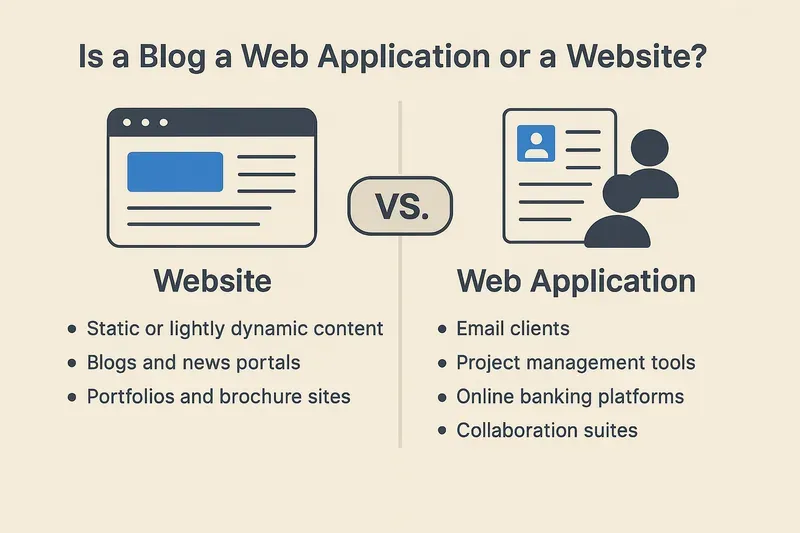
Most blogs are classic websites, because they:
- Deliver static or lightly dynamic content (articles, images)
- Require minimal interactivity beyond comments or likes
- Are built on platforms like WordPress or Statamic which focus on rendering HTML and CSS with limited frontend logic
However, a blog can resemble a web application if it features:
- Real-time collaboration, such as multi-author live editing
- Personalised dashboards or complex search/filter functionality
- Rich client-side interactivity, like drag-and-drop editors or inline analytics
Conclusion
While traditional websites remain ideal for static content and marketing, modern businesses often benefit from the power and flexibility of web applications. By running in the browser, web apps deliver richer user experiences, simpler maintenance and cross-platform reach – making them a compelling alternative to desktop software.
Terminology
- HTML/CSS/JavaScript – Core web technologies used to build websites and applications
- Client-side – Code executed in the user's browser
- Server-side – Code executed on the web server
- REST/GraphQL – Common API protocols for data exchange
- Static – Fixed content that does not change unless edited by a developer
- Dynamic – Content that updates in real time or based on user input
Need Help Building the Right Solution?
Whether you're launching a content-focused site or a complex web application, our team at Chokware can guide you through the process. We specialise in tailored web development solutions that fit your business needs, goals and scale.
Talk to an Expert